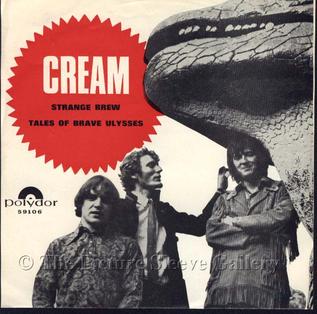You are using an out of date browser. It may not display this or other websites correctly.
You should upgrade or use an alternative browser.
You should upgrade or use an alternative browser.
What are you listening to?
- Thread starter Goldhedge
- Start date
Welcome to the Precious Metals Bug Forums
Welcome to the PMBug forums - a watering hole for folks interested in gold, silver, precious metals, sound money, investing, market and economic news, central bank monetary policies, politics and more. You can visit the forum page to see the list of forum nodes (categories/rooms) for topics.
Why not register an account and join the discussions? When you register an account and log in, you may enjoy additional benefits including no Google ads, market data/charts, access to trade/barter with the community and much more. Registering an account is free - you have nothing to lose!
Well, That was NOT current day LA or California for sure.
spinalcracker
Ground Beetle
- Messages
- 560
- Reaction score
- 984
- Points
- 218
is this the What Are You Listening To thread?
There was a comedic version of it, that was playing constantly on the local easy-listening radio station in the early 1970s. Wish I could remember who it was, or find it. It was Ray Stevens, or some other novelty singer...but he he just took it apart.
It was only years later I heard Johnny Cash do it straight.
It was only years later I heard Johnny Cash do it straight.
- Messages
- 11,406
- Reaction score
- 8,172
- Points
- 238
That's what it could turn into... maybe the thread title could change? @pmbugis this the What Are You Listening To thread?
- Messages
- 11,406
- Reaction score
- 8,172
- Points
- 238
Yer the best!Done
spinalcracker
Ground Beetle
- Messages
- 560
- Reaction score
- 984
- Points
- 218
not Jackie who
it is Jackie blue
it is Jackie blue
spinalcracker
Ground Beetle
- Messages
- 560
- Reaction score
- 984
- Points
- 218
BackwardsEngineer
curmudgeon
Just a fantastic player, only thing better is listening to him at the Ryman
Last edited:
BackwardsEngineer
curmudgeon
takings mrs BE on a cruise later this week... cigar the lady's for you dude
BackwardsEngineer
curmudgeon
Charleston's favorite son... an anthem for living today
BackwardsEngineer
curmudgeon
Morgan easy on the eyes and miraculous voice
- Messages
- 486
- Reaction score
- 879
- Points
- 193
- Messages
- 486
- Reaction score
- 879
- Points
- 193
- Messages
- 486
- Reaction score
- 879
- Points
- 193
spinalcracker
Ground Beetle
- Messages
- 560
- Reaction score
- 984
- Points
- 218
- Messages
- 11,406
- Reaction score
- 8,172
- Points
- 238
A bit of history on this song:
The song was the first collaboration between guitarist Eric Clapton and artist Martin Sharp. Clapton composed the music, inspired by the Lovin' Spoonful's 1966 hit "Summer in the City".[5] "I just started chatting to Eric", said Sharp, who lived in the same building. "I told him I had written a poem. He, in turn, told me he'd written some music. So I gave him my poem. Two weeks later, he turned up with it on the B-side of a 45 record."[6] Sharp had written the lyrics to the melody of Leonard Cohen's song "Suzanne", specifically the Judy Collins version.[7]
The song was the B-side for "Strange Brew" in June 1967, several months ahead of the group's second album, Disraeli Gears, which included both songs. Cash Box called it a "visionary hard rock excursion."[8] AllMusic's Matthew Greenwald calls it, "One of a few overtly psychedelic songs to have aged gracefully ... Lyrically, it's a relatively factual and colorful rendering of the great Greek tragedy Ulysses".[1]
In his 2007 autobiography, Clapton recalls:
When [first meeting Sharp] he heard that I was a musician, he told me he had written a poem that he thought would make good lyrics for a song. As it happens, I had in my mind at that moment an idea inspired by a favorite [sic] song of mine by the Lovin' Spoonful called "Summer in the City," so I asked him to show me the words. He wrote them down on a napkin and gave them to me ... These became the lyrics of the song "Tales of Brave Ulysses".[9]
The song uses a descending tetrachord bass line of D/C/B/B-flat, which Greenwald describes as "simple but effective".[1] Jack Bruce, on bass, also provides the vocal, and Ginger Baker is on drums.
Cream recorded the song at Atlantic Studios in New York City in May 1967, during the sessions for Disraeli Gears.[9] Atlantic brought in engineer Tom Dowd and producer Felix Pappalardi to work with Cream on their next album. For the recording, Clapton used a wah-wah pedal guitar effects unit for the first time.
Cream performed the song in concert and a 10 March 1968 recording from Winterland in San Francisco is included on Live Cream Volume II.[1] In May 1968, the group were filmed performing it for The Smothers Brothers Comedy Hour television programme.[10] "Tales of Brave Ulysses" was later overshadowed by "White Room", which utilised the wah-wah and a superficially similar chord progression (although starting on Dm instead of D major) to create one of Cream's biggest hits.[1]

